

Mecoptera
Boreidae and Panorpidae, Snow fleas and Scorpionflies
Introduction Mecoptera General Boreidae General Panorpidae Species Literature
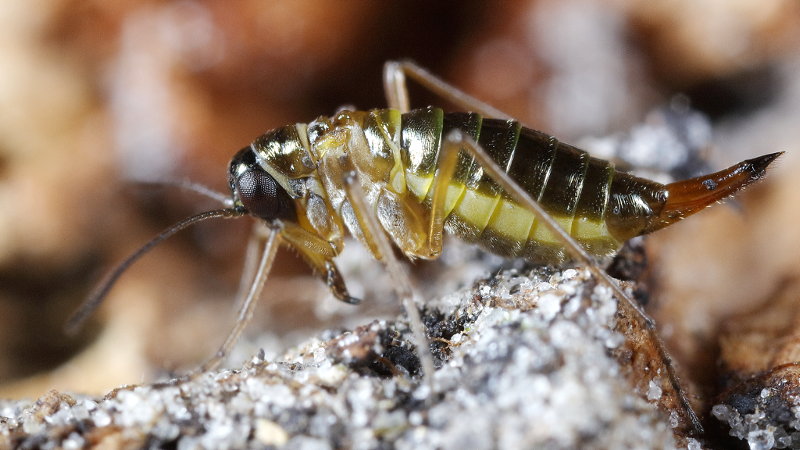
Boreus hyemalis, Snow flea or Snow scorpionfly ♀
Introduction
Boreidae and Panorpidae, Snow fleas and de Scorpionflies
There is a very limited number of species in Netherlands, 1 species of Snow flea and five species of Scorpionflies.
It is an ancient group, which is seen as a predecessor of the butterflies, they have a complete metamorphosis.
The Snow flea has no functional wings and is a rare animal that is found primarily on sand dunes.
There are five species of Scorpionflies in The Netherlands, one very rare of the genus Aulops and four of the genus Panorpa.
The animals can be found in forest edges, wild places along gardens, meadows and fields and the panorpas are very common.
General Boreidae
Boreus hyemalis
Snow fleas have a very different rhythm than what you're used to of insects, normally insects are animals of summer, de Snow flea is a real winter animal.
In summer, the larvae develop, they live from the rhizoids of mosses. The larvae pupate the second year and out of these pupa come in the autumn the adult insects.
During the winter months you can find the adult insects. The adults live mainly of mosses and dead insects.
After a number of times a day searching in places where the Snow flea has been observed I finally find a female in the middle of a sand drift.
After I have lifted a piece of wood looked at it and layed it back, I see that something jumps away, finally a Snow flea.
Than there is another problem, how to take a picture of a 4 mm long animal that jumps over the sand and that I have to get within a distance of ten centimeters.
Stretched out lying and crawling in the sand I manage to get some pictures.
It is a female, these are in the possession of an ovipositor. The males have wing stubs which are used to hold the female during mating.
Females have two little scales as rest of wings. A few days later I manage to make some pictures of the mating.
The male holds the female with the wing stubs. He crawl under the female that afterwards during the mating stays put on his back.

Boreus hyemalis, Snow flea or Snow scorpionfly ♀
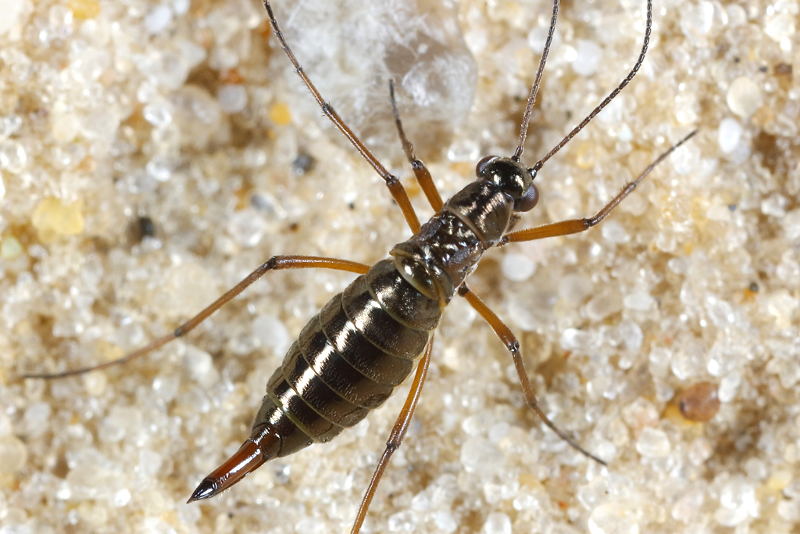
Boreus hyemalis, Snow flea or Snow scorpionfly ♀

Boreus hyemalis, Snow fleas or Snow scorpionflys, mating
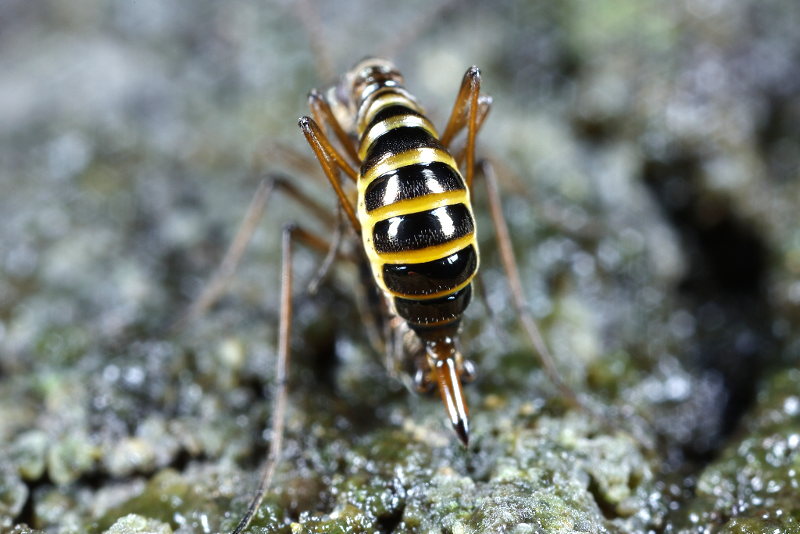
Boreus hyemalis, Snow fleas or Snow scorpionflys, mating

Boreus hyemalis, Snow flea or Snow scorpionfly ♀
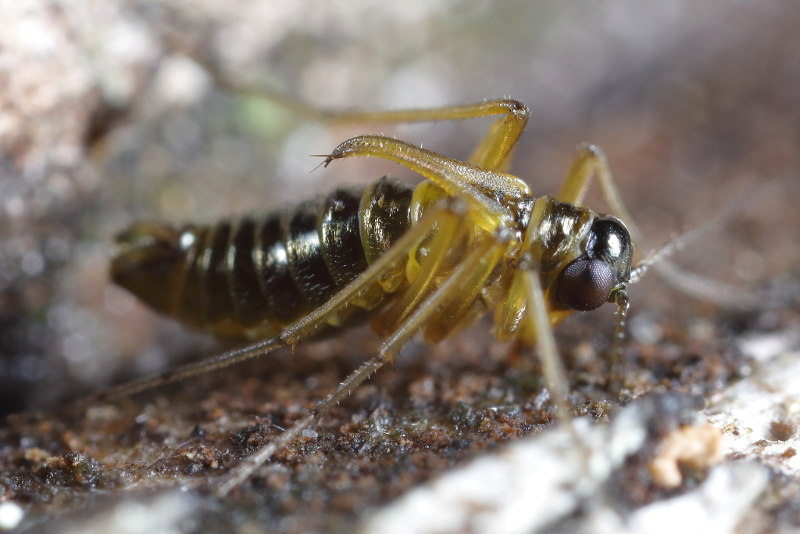
Boreus hyemalis, Snow flea or Snow scorpionfly ♂
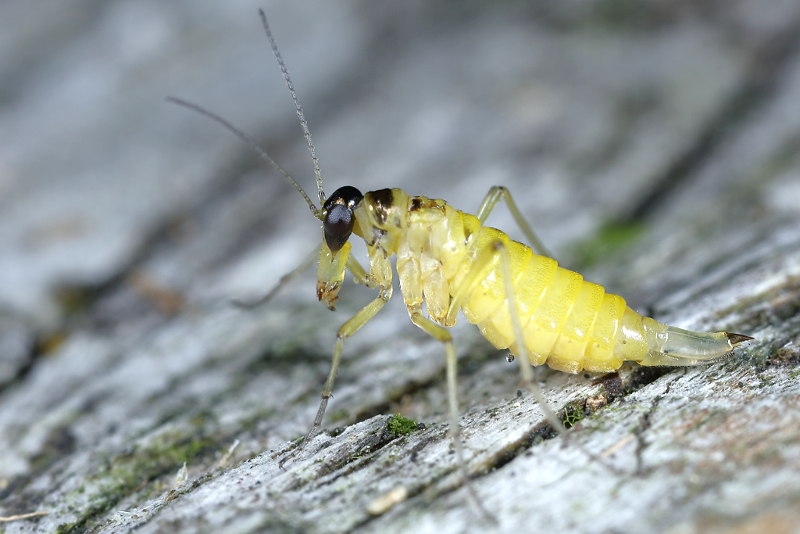
Boreus hyemalis, Snow flea or Snow scorpionfly, fresh molted ♀
General Panorpidae
Scorpionflies (2-3 cm) are much larger than Snow fleas (4 mm) and look dangerous, however, are completely innocent. Males seem to have a spine at the rear of the body like a Scorpion, this are tongs with which he holds the female during mating. At the mating the male grasp the female with the tongs. A wing of the female is wedged under a protrusion of one of the back segments (the notal organ) of the male so the female is quite stuck. The female is often conquered with a bridal gift, a prey animal or a drop of brown saliva.
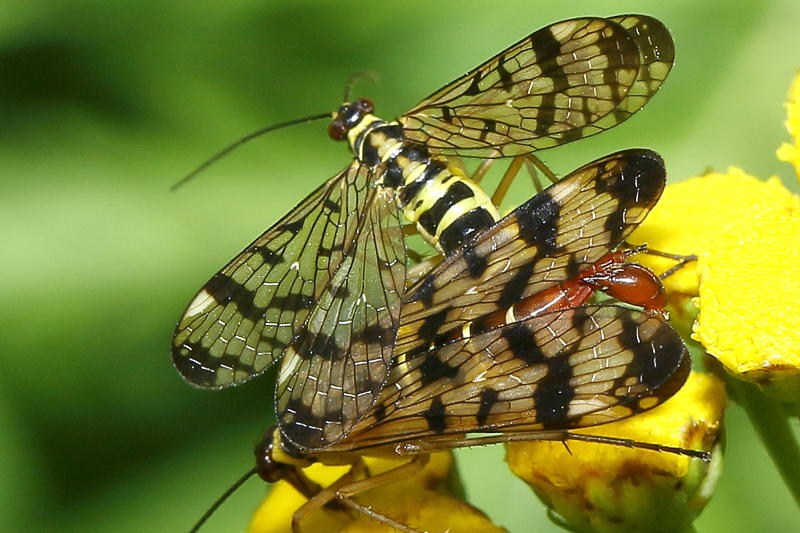
mating
Females lay their eggs in the soil.
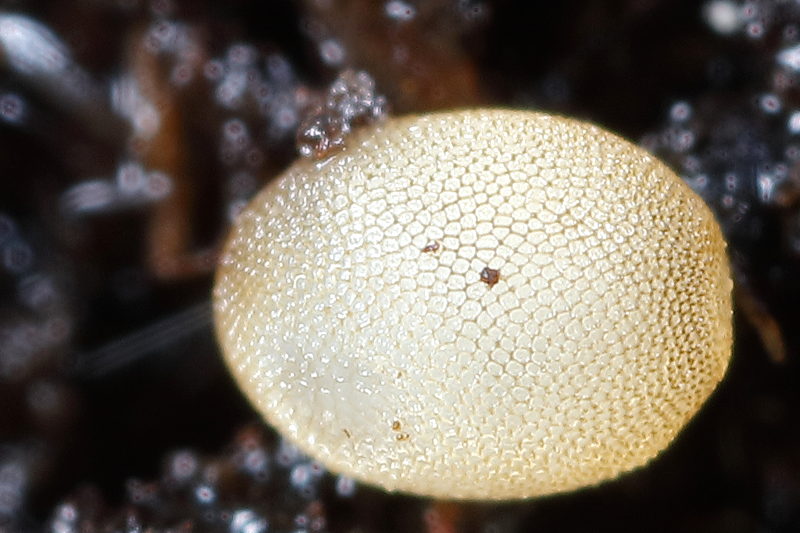
egg

eggs
Larvae resemble caterpillars, however, have more abdominal legs and compound eyes. They develop in the leaf litter and soil. The larvae are very hard to find, that is why I set up a culture, see Brauwer 1862. At favorable conditions, there are two generations per year.

Panorpa vulgaris, young larva
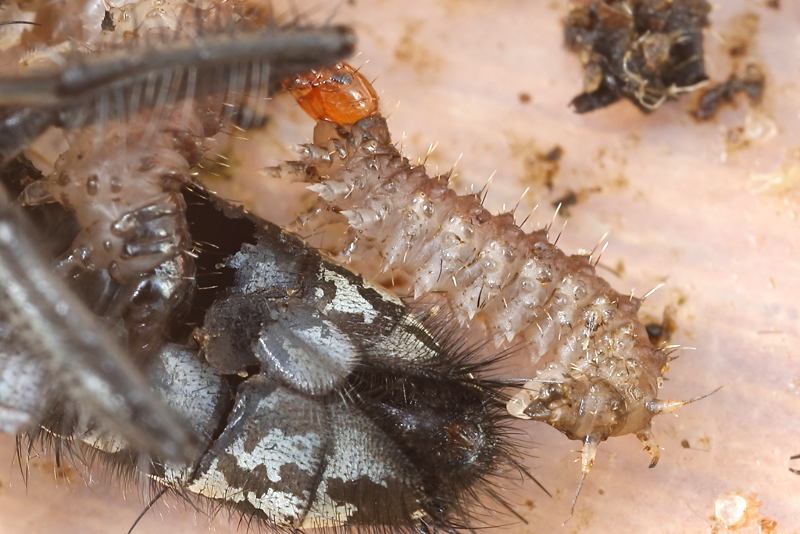
Panorpa vulgaris, larva
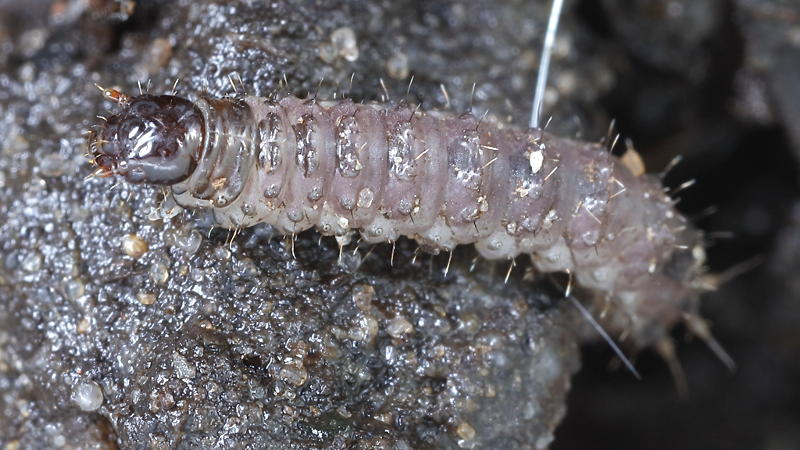
Panorpa vulgaris, larva

Panorpa vulgaris, larva
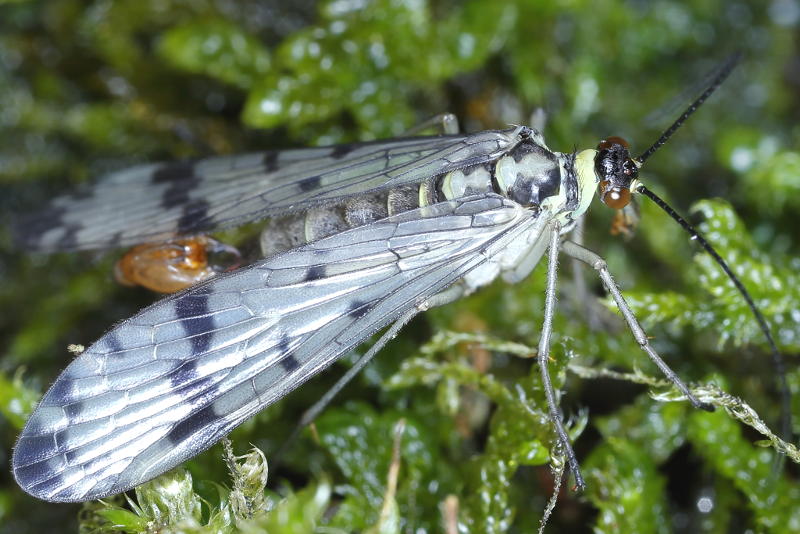
Panorpa communis, freshly hatched ♂
The behavior is striking, being beasts with bravado. Very striking landing somewhere on a leaf, a few times more moving the wings and walk around. It looks like they are afraid of nothing. What sometimes bad ends. I saw a Scorpion fly landing on a leaf where there was a European hornet on, it approached the hornet with wing-beats. The wasp was not impressed, grabbed the fly and did eat it without any problem.
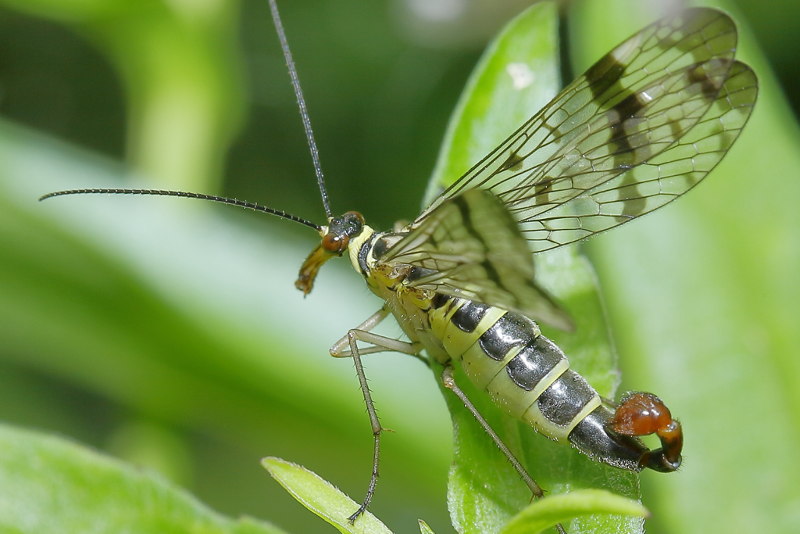
wing-beat
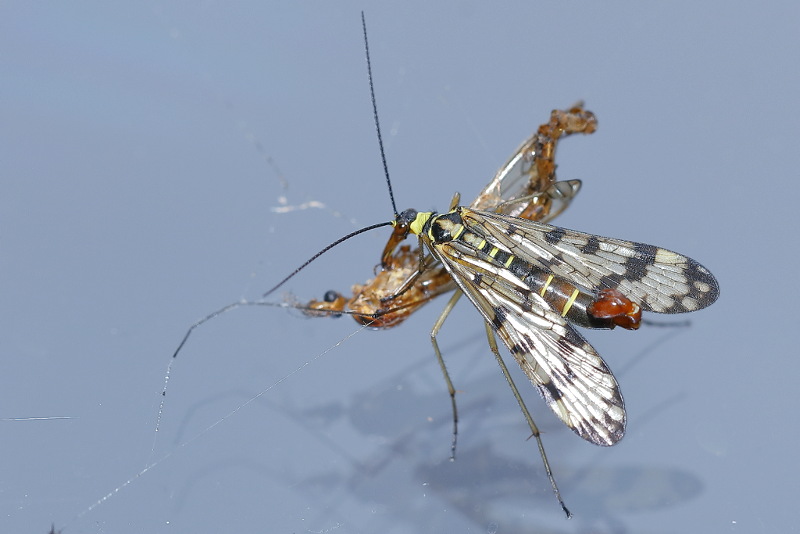
Panorpa vulgaris, at spiders prey
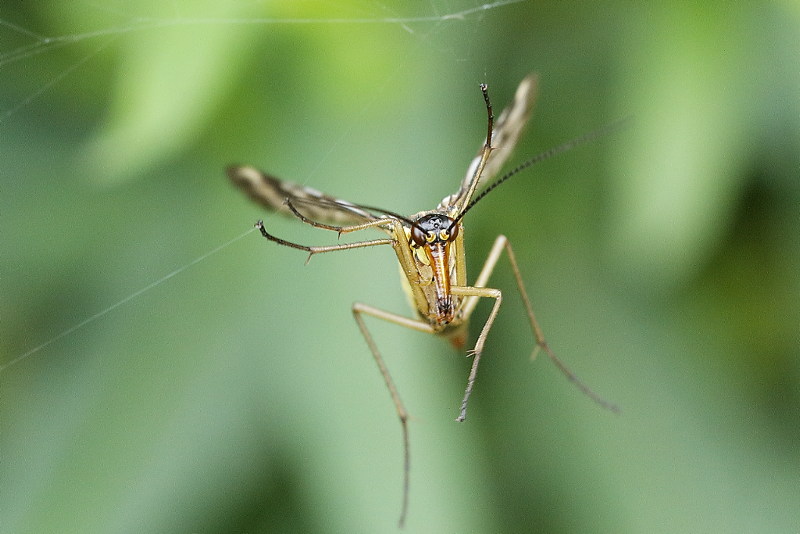
Panorpa vulgaris, searching in spider web
Often a spiderweb is visited, remnants of the preys of spiders are a popular prey. Scorpionflies paste not stuck in a spider's Web. Sticking is prevented by a secretion of the intestine. Comes the spider to look then he goes away quickly as he discovered the Scorpion fly. The reason is not clear to me and there are exceptions, below a picture of a Tiger spider, Argiope bruennichi who caught a man Panorpa, clearly visible through the cobwebs. Scorpionflies life of aphids, dead insects, bird droppings, nectar, pollen, ripe fruits and honey dew.
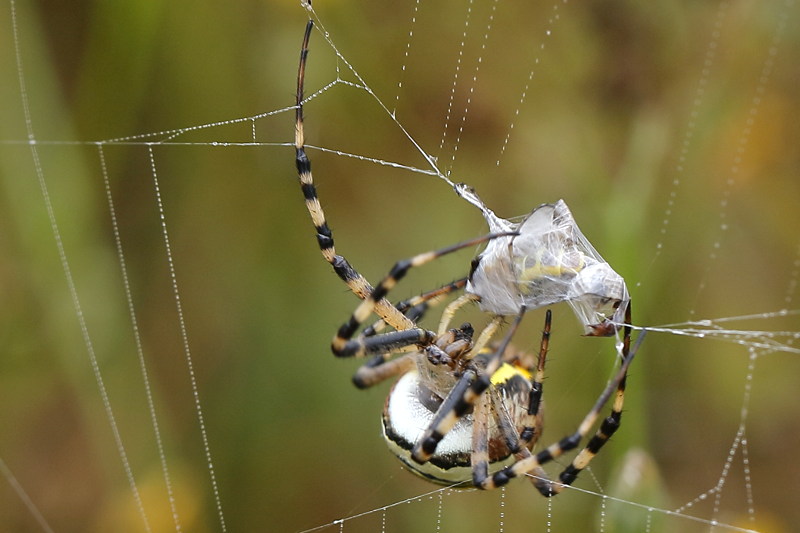
Argiope bruennichi, has captured a Panorpa
It is rather difficult at Scorpionflies in order to determine what species it is. The best are the males to do on the basis of a ledge on the tongs. Patches in the wings are another determination characteristic but those spots are quite variable and therefore not 100 percent reliable.
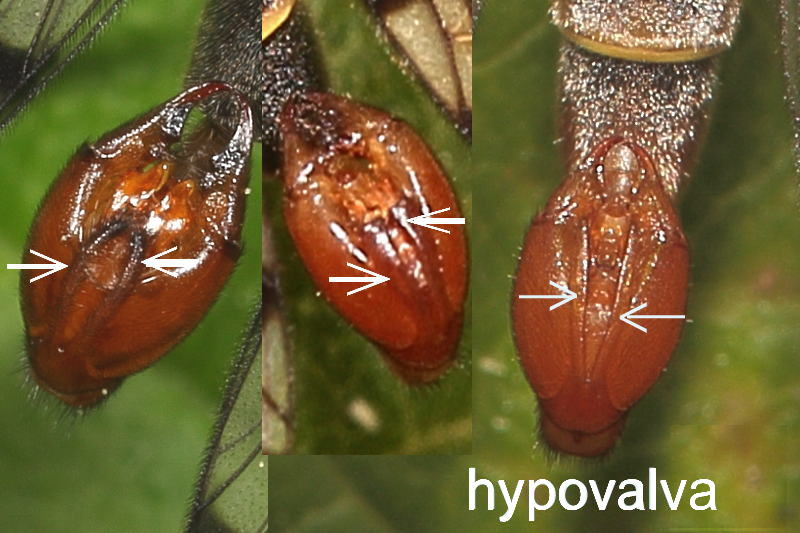
hypovalva
On the composition picture above an explanation where the hypovalva lay and how they look.
Left: short, black point, bowing to eachother. Panorpa communis, and Panorpa vulgaris,
Middle short and right: Panorpa germanica,
Right: long and from each other: Panorpa cognata,
You can appoint two species and must now still the first two on the basis of the basal stain.
Basic stain small or absent: Panorpa communis,
Basic stain on two wing cells: Panorpa vulgaris,
Panorpa cognata,
Panorpa cognata, is distinguished of the other species by its red head with black dot between the eyes. Be careful there are individuals of the other species with partial red heads. The male is identified by the last thick segment before the tail, this is not conical and has a clear increase. The males are also good to determine by looking at the tongs behind the body. There is no black at the points to the long straight hypovalva.
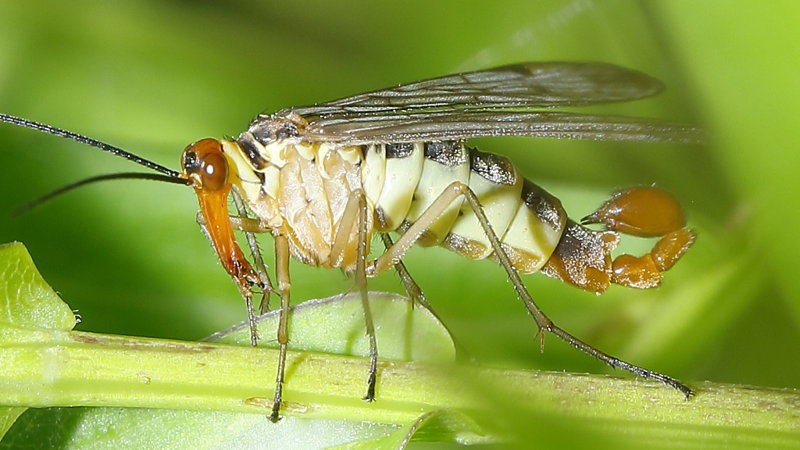
Panorpa cognata ♂

Panorpa cognata ♂

Panorpa cognata ♀
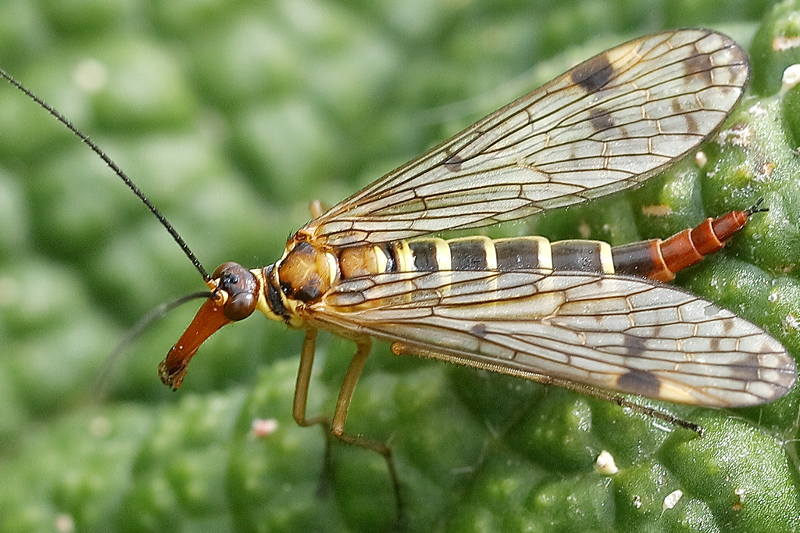
Panorpa cognata ♀
Panorpa communis,
At the males of P, communis and P, vulgaris resemble the hypovalva each other, quite long and curved with mostly black point.
So to distinguish the species you need other characteristics.
That characteristic can be found in the stain to the base (close to the body so) of the wings.
At Panorpa communis that stain is relatively small and fills one cell in the wing or is absent, at Panorpa vulgaris
is the stain about two or more cells.
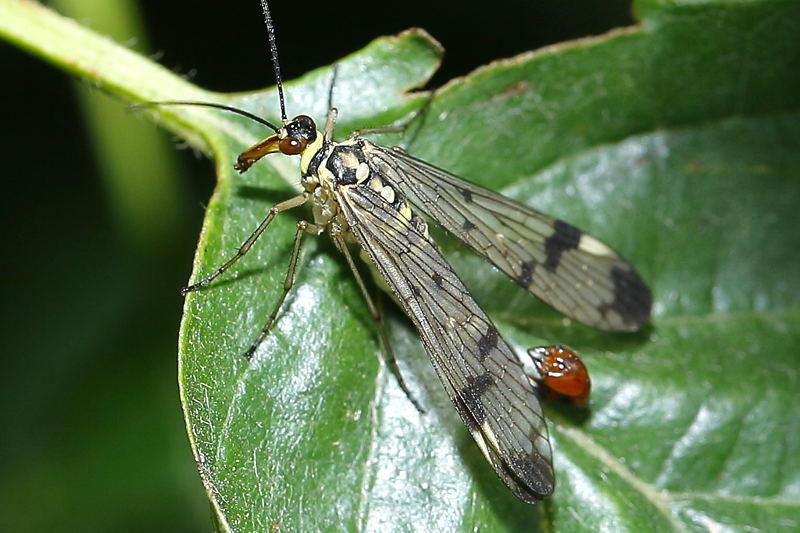
Panorpa communis ♂

Panorpa communis ♂
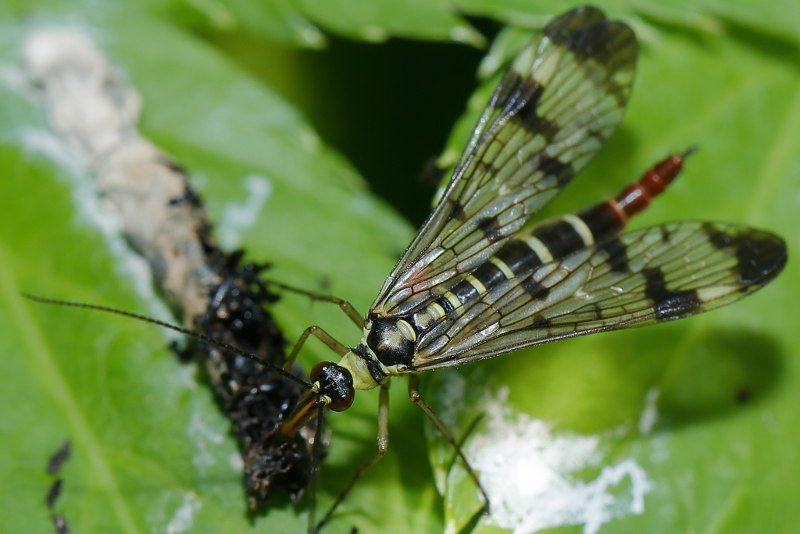
Panorpa communis ♀ eats bird droppings
Panorpa germanica,
The P, germanica usually has wings with not so many stains. The hypovalva are short and wide without black points. Another feature is that the three spots on the inside of the wing opposite the pterostigma, (the yellow stain on the outside edge), are almost all equal in size.

Panorpa germanica ♂

Panorpa germanica ♀
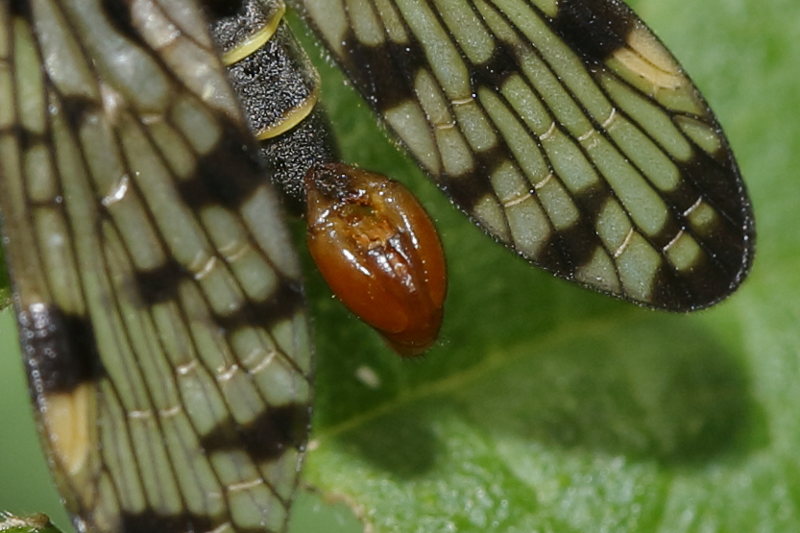
Panorpa germanica ♂
Panorpa vulgaris,
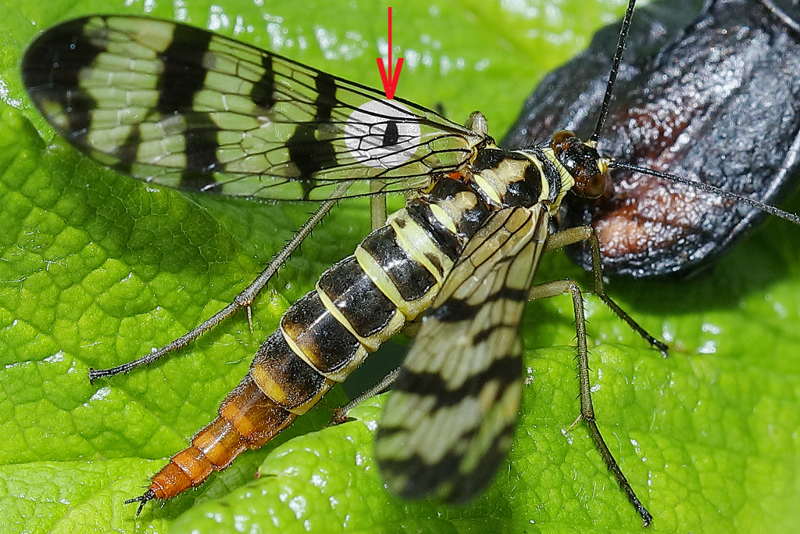
Panorpa vulgaris, basic stain about two cells
At the males of P, communis and P, vulgaris resemble the hypovalva each other, quite long and curved with mostly black point.
So to distinguish the species you need other characteristics.
That characteristic can be found in the stain to the base (close to the body so) of the wings.
At Panorpa communis that stain is relatively small and fills one cell in the wing or is absent, at Panorpa vulgaris
is the stain about two or more cells.
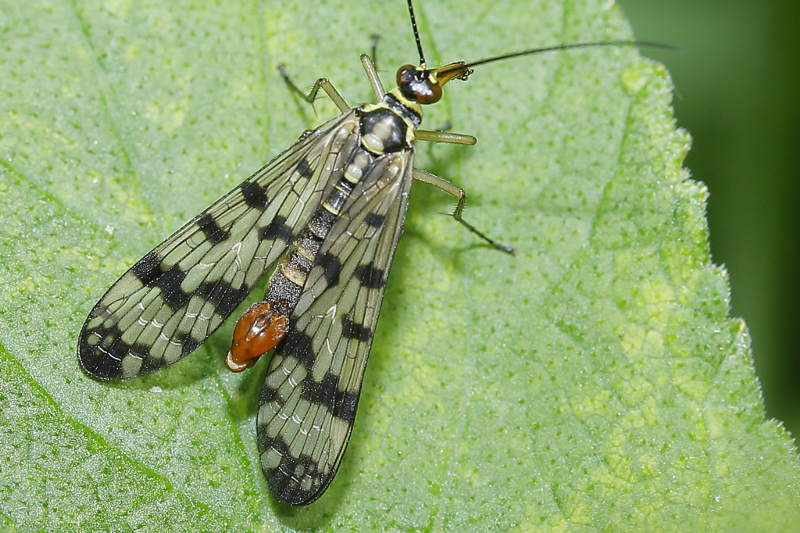
Panorpa vulgaris ♂

Panorpa vulgaris ♂
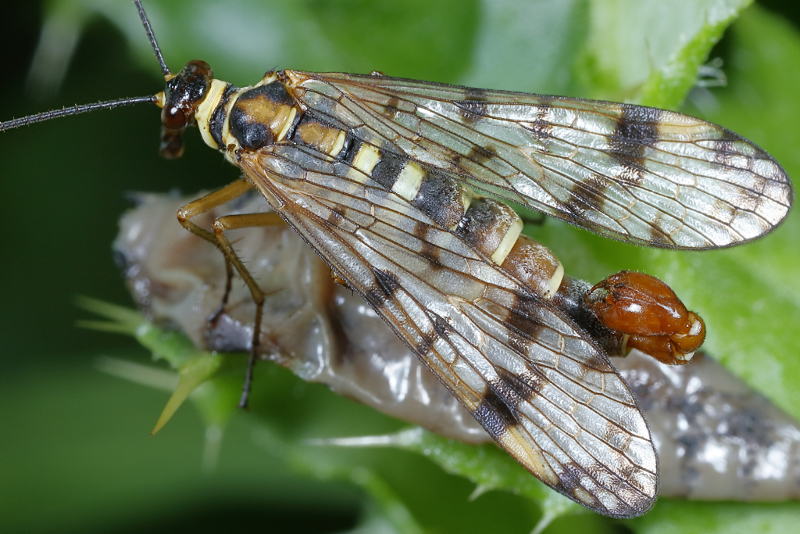
Panorpa vulgaris ♂
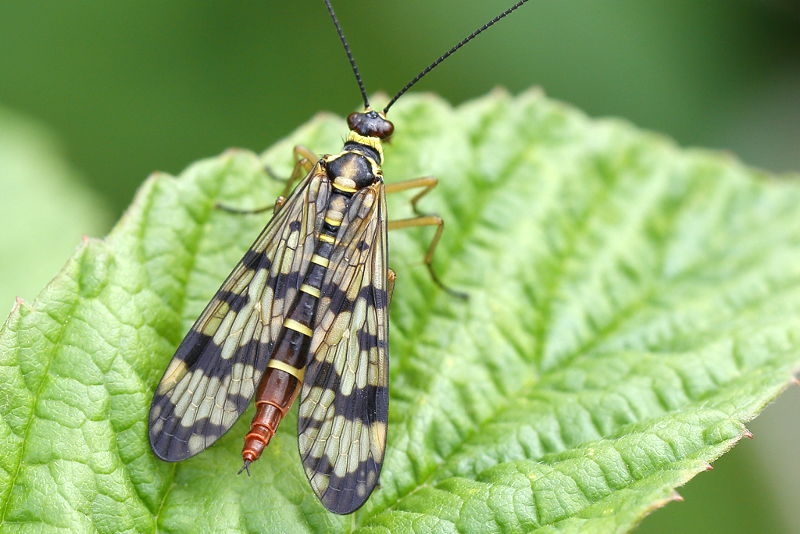
Panorpa vulgaris ♀
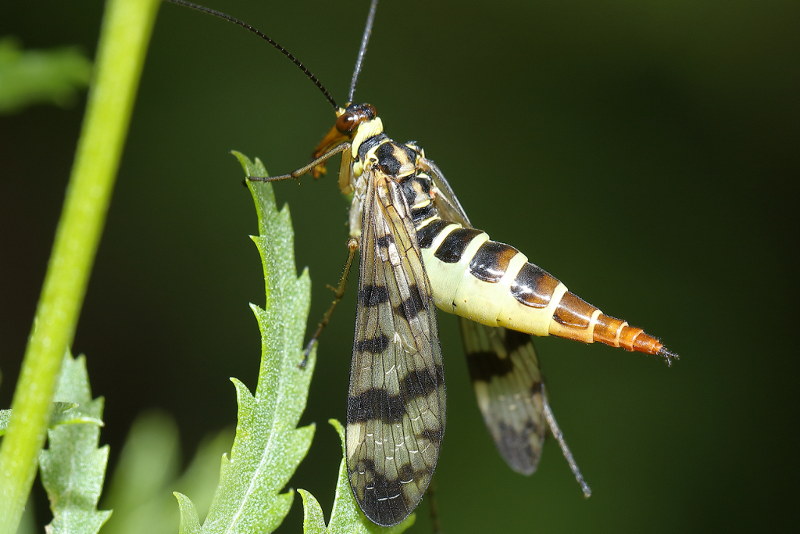
Panorpa vulgaris ♀
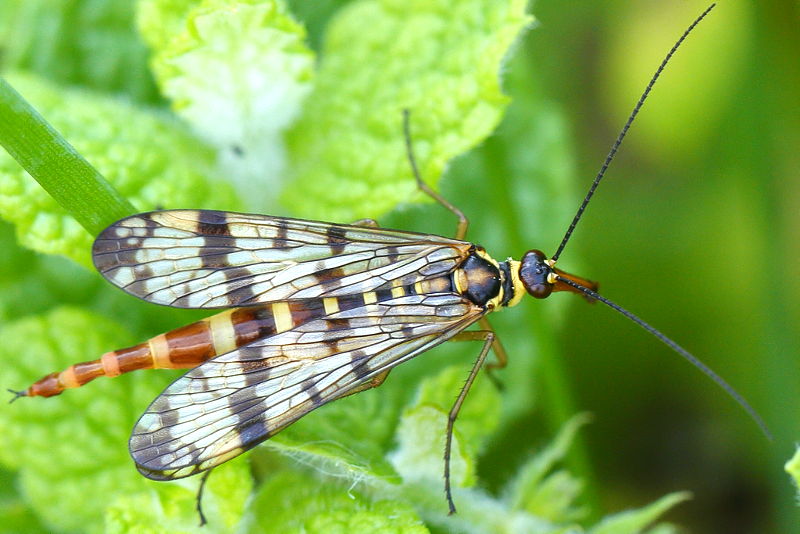
Panorpa vulgaris ♀
overview species:
I have no pictures of the species where you cannot click through .
- Order: Mecoptera
- Family: Boreidae
- Boreus hyemalis. (Linnaeus, 1767) - Snow fleas/Snow scorpionfly
- Family: Panorpidae
- Aulops alpina. Rambur, 1842
- Panorpa cognata. Rambur, 1842
- Panorpa communis. Linnaeus, 1758
- Panorpa germanica. Linnaeus, 1758
- Panorpa vulgaris. Imhoff & Labram, 1845
Literature:
-
Brauwer, F., 1862. Beiträge zur Kenntniss der Panorpiden Larven.
Landesmuseum Österreich(pdf)
- Hogenes, W. 2010 Mecoptera-Schorpioenvliegen en Sneeuwspringers. De Nederlandse Biodiversiteit pag.256 Naturalis (pdf) Mecoptera
-
Raemakers, I. en Kleukers, R. 1999 De Sneeuwspringer Boreus hyemalis in Nederland (MECOPTERA: BOREIDAE) Nederlandse Faunistische Mededelingen 8 - 1999
Naturalis (pdf)